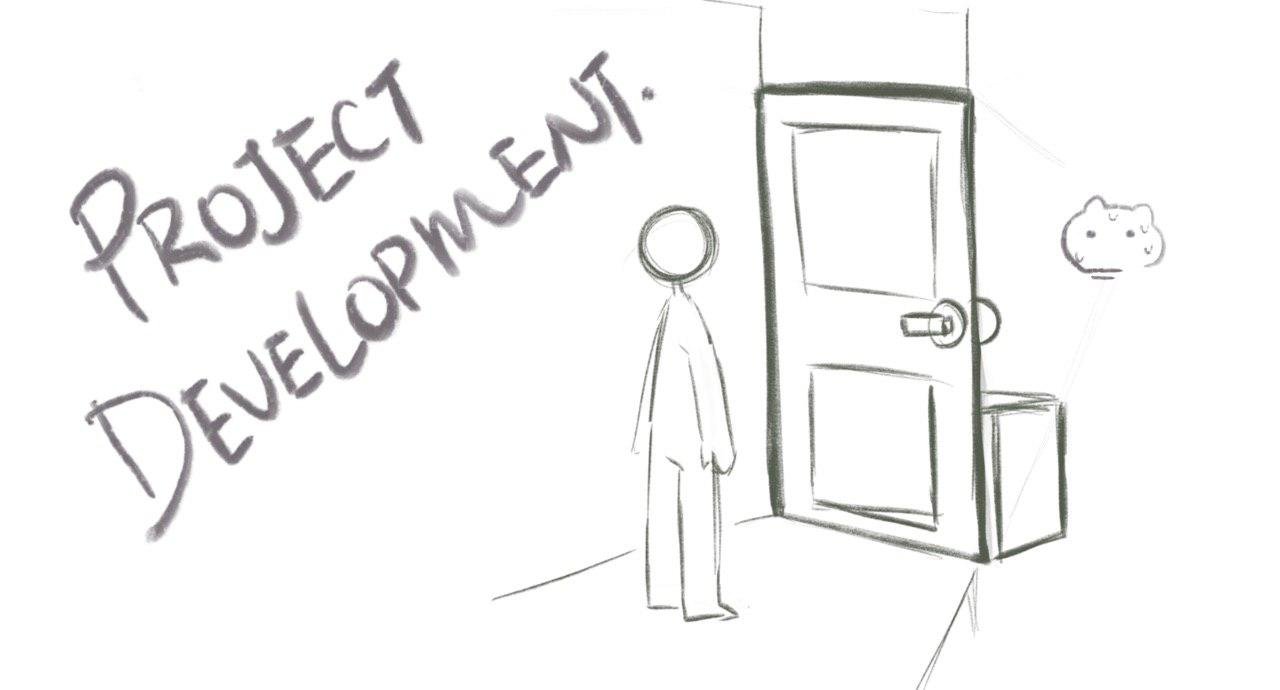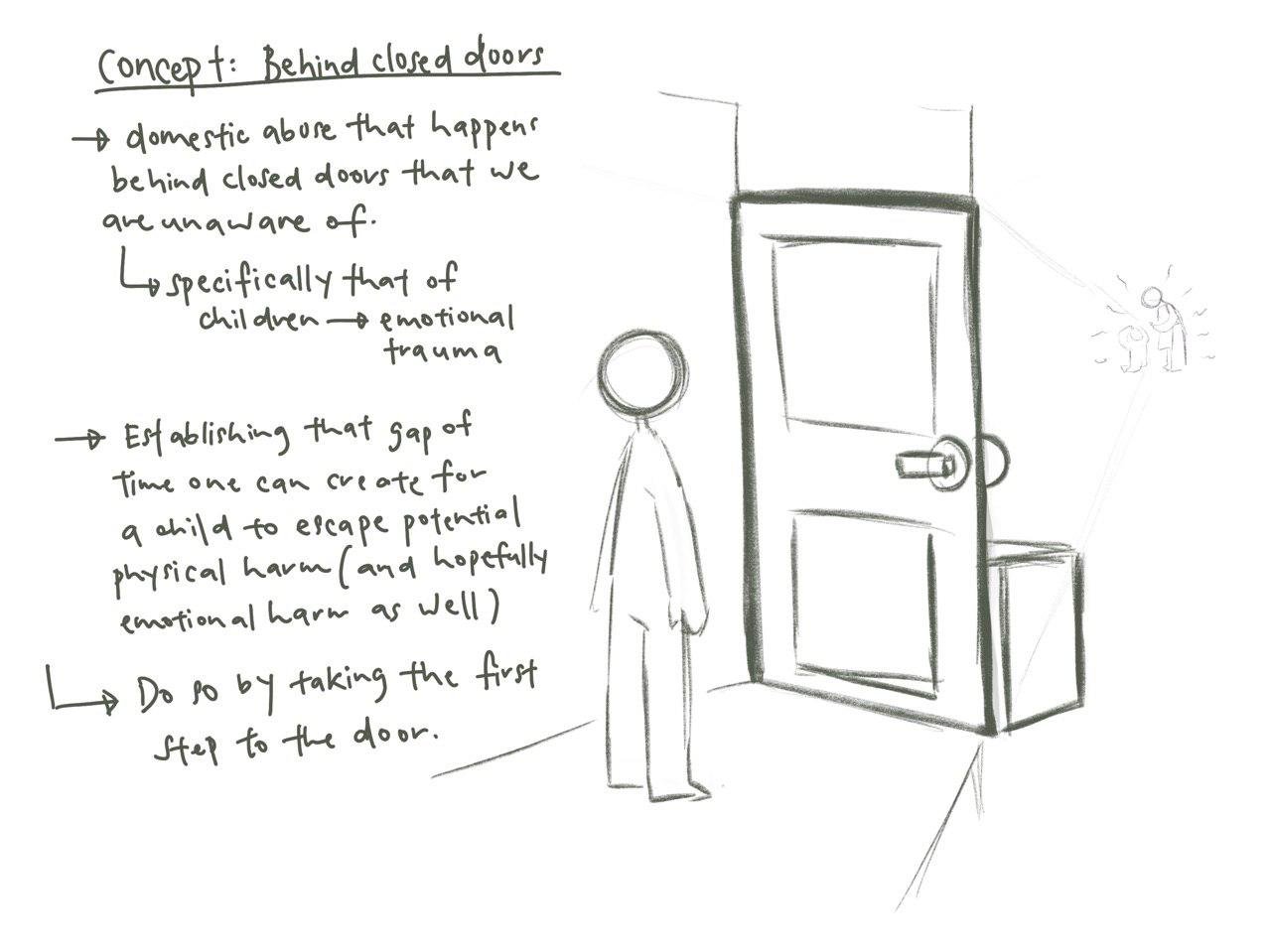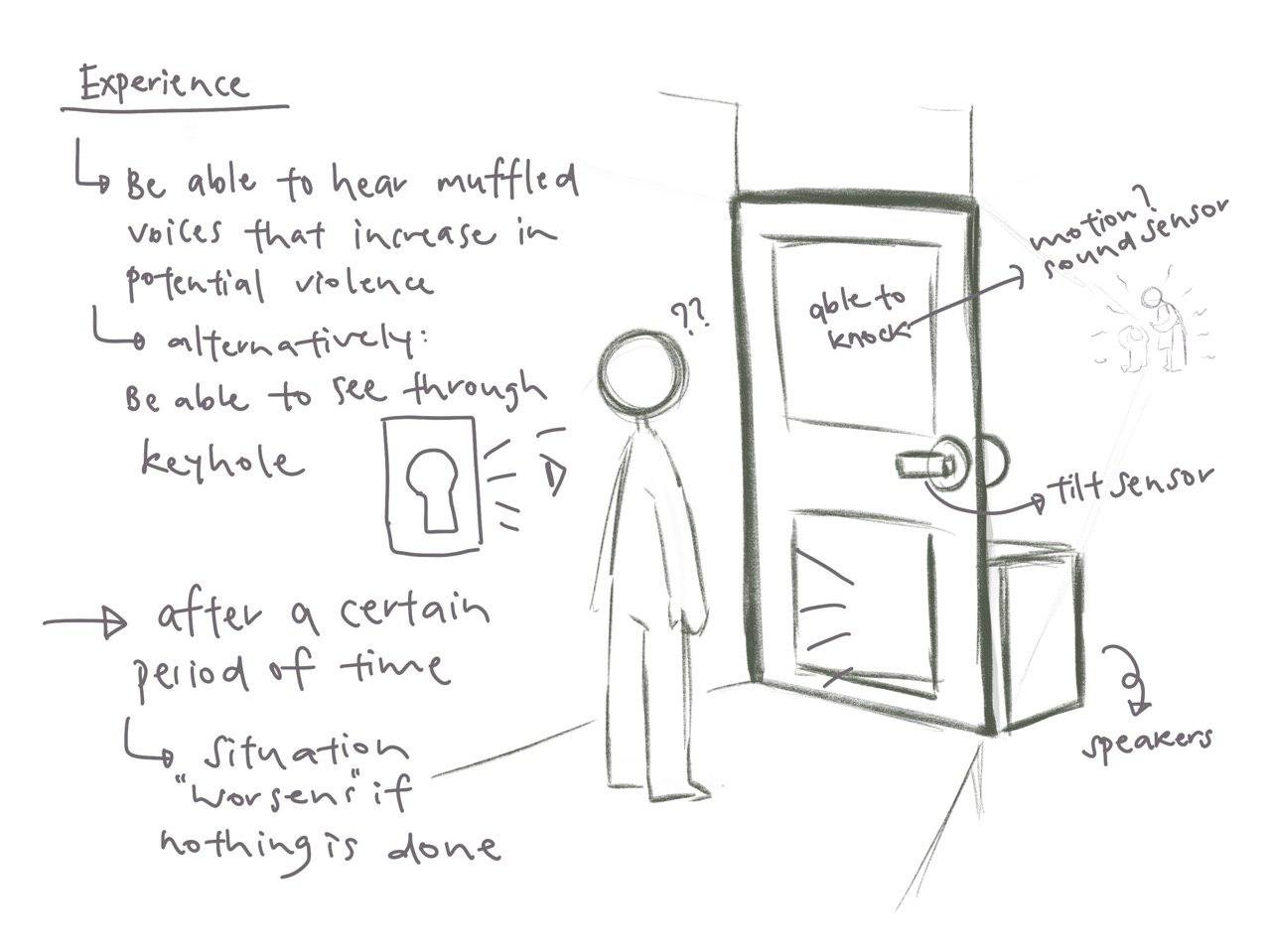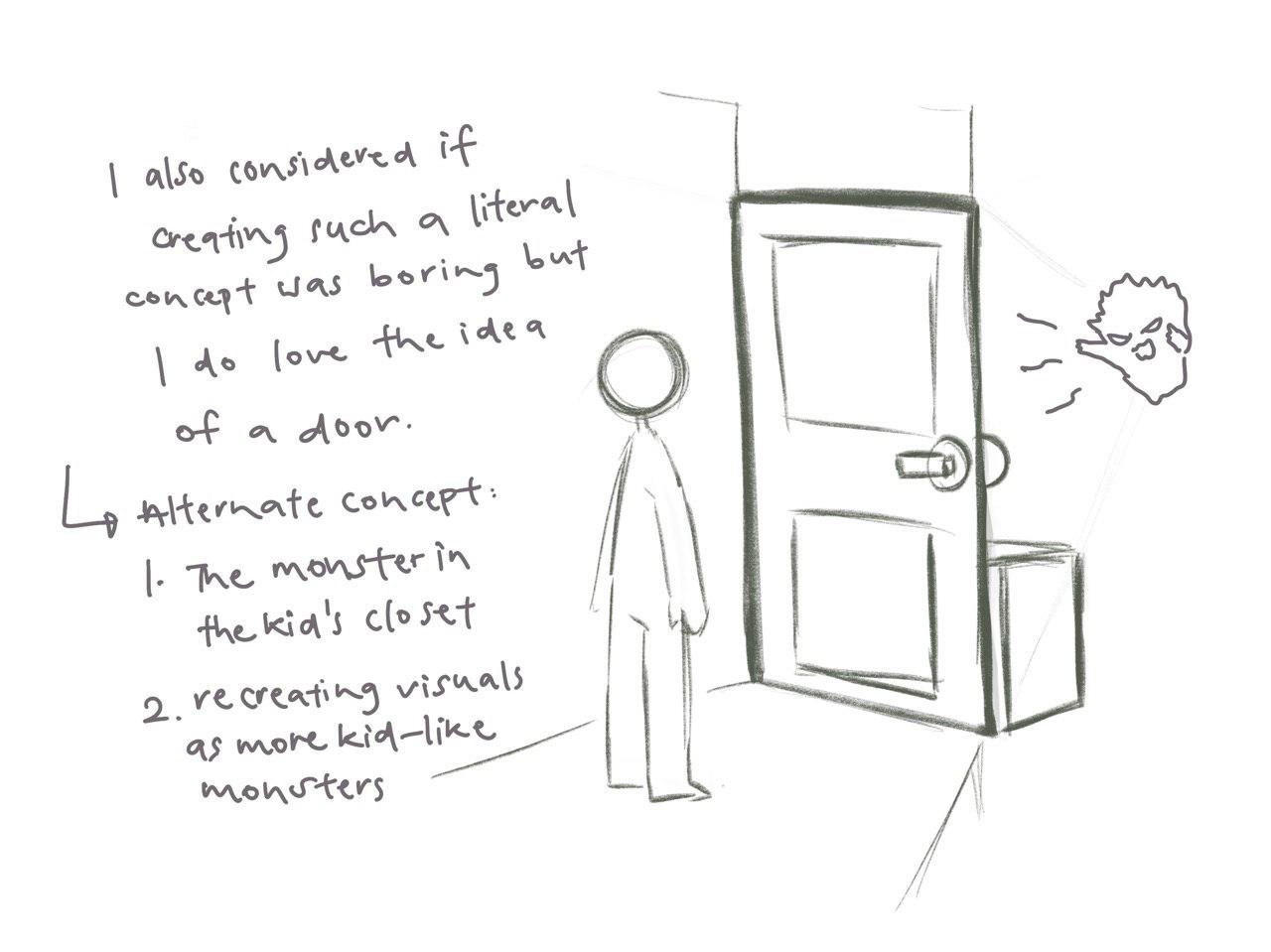- How does your audience experience your project?
The audience is put into a space that only has a door. Behind the door they hear noises, vaguely human, but otherwise they cannot understand what is being said, besides the crying of a child and the nagging of an adult. They are allowed to interact with the door, by either knocking (once, twice, frantically) or attempting to open the door (once, twice, rattling), or to not do anything at all. Every reaction (or lack thereof) will change the circumstances, and the audience can react accordingly again (by leaving the room, or continuing the experiment). - Is it for a single person to engage with your project or for multiple participants concurrently?
It is preferable for a singular person to experience this, as it creates an environment where you are pressured to decide if you want to shake, knock, or do anything to save the situation happening behind the door. - What is the interaction or situation you are creating for your audience?
To create the pressure of time, or a surreal situation where they are left to make a decision. - What is the intention of this interaction?
What I intend to bring across is the idea of intercepting a bad situation. Be it a small knock, or a question left lingering, it will change what happens behind the door. It will allow a child to escape a bad situation, or it might rid them of their bad environment entirely. - How does this interaction relate to the concept of “Interstice”?
This interaction tells urgently of the interstices of time. The gap of time that people create that could help another life. By just being present in a situation, they will aid in buying time, and could possibly save someone.





Recent Comments